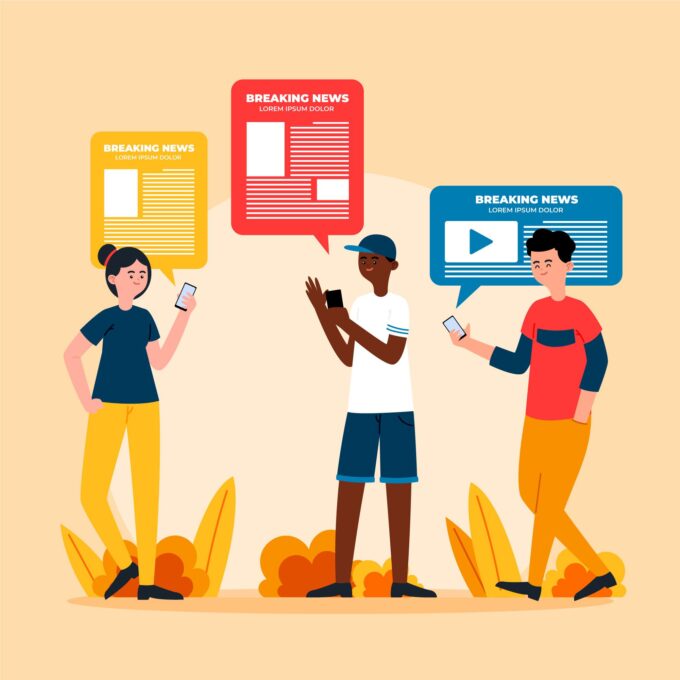We live in a fast-paced world. People are constantly on the move. Everyone has somewhere to be or something to do, but one thing is sure: their consistent interaction with mobile phones. As a marketer, you can take advantage of mobile marketing.
Mobile marketing is simply the art of reaching customers where they spend a significant amount of their time: on their mobile devices. From social media ads to SMS and mobile campaigns, it allows businesses to connect with potential customers in real time.
In this guide, we’ll explore mobile marketing campaigns, why they’re important, and how to create a strategy that works.
Why Mobile Marketing Matters
Our mobile phones have become an essential part of our lives. People spend over 3 hours per day on their devices. This presents unique opportunities for businesses to market their brands, goods, and services effectively. Here’s why mobile marketing is a must:
- Unmatched Reach and Accessibility: A vast majority of the global population own and constantly use their smartphones. This means your target audience will most likely be reachable through their mobile devices. This provides an always-on channel for businesses to connect with customers in real time, delivering timely messages and offers.
- Personalised Marketing: Mobile devices give us data and insight on user behavior, preferences, location, and interests. This data allows marketers to create highly personalised and targeted campaigns, ensuring messages are relevant to individual users. Personalised content, offers, and app experiences give consumers a deeper connection with your brand.
- Cost-Effective Marketing: Compared to other forms and mediums of advertising, mobile marketing can be significantly more cost-effective, offering a high return on investment (ROI) due to its targeted nature.
- Location-Based Services: Geofencing and beacon technology enable businesses to send targeted promotions and notifications to users when they are in a specific geographic area (e.g., near a store). This drives foot traffic and immediate conversions.
Related: Introduction to Customer Loyalty Programs: Building Long-Term Relationships

Types of Mobile Marketing
There are several forms of mobile marketing. This isn’t just about sending texts or ads to customers’ mobiles, but there are several mediums and strategies to employ for your campaign to be effective.
- SMS Marketing: Also known as Short Message Service Marketing, it is a highly effective mobile marketing strategy that involves sending promotional or informational text messages directly to customers’ mobile phones. Despite the rise of more visually rich digital channels, SMS marketing remains a powerful tool due to its directness, high open rates, and immediate impact.
- Mobile App Marketing: This refers to the complete process and strategies involved in marketing a mobile application over its lifespan, from pre-launch awareness to long-term engagement and revenue. It involves attempts to increase awareness, encourage downloads, improve retention, and, ultimately, generate revenue or achieve other business goals.
- Social Media Mobile Ads: SMMA Ads are crucial in mobile marketing because platforms like Facebook, Instagram, and TikTok are primarily used on mobile devices. This makes it easy to integrate Ads seamlessly into user feeds. These ads come in formats like video, carousel, and “Stories” to capture attention and increase engagement. Finally, these ads facilitate direct responses and offer robust analytics, enabling businesses to measure.
- Location-based marketing: This involves taking advantage of geo-targeting to send offers to users based on their real-time location. For instance, Uber can offer a discount to users going to a particular event or within a regional area.
- Mobile-Friendly Website Campaigns: With most browsing on mobile, a mobile-friendly website campaign directly leverages this opportunity. This type of campaign takes full advantage of a website that’s easy to navigate, loads quickly, and is responsive across all device types. if your website isn’t optimised for mobile, your marketing campaign isn’t reaching its full potential.
How to Build a Successful Mobile Marketing Strategy
Mobile marketing campaign strategies aren’t all that different from your regular campaigns. But let’s quickly walk through a few key things to keep in mind when building a successful mobile marketing strategy.
- Define Your Goals: Before anything else, you need to clearly define what you want to achieve with your mobile marketing. Are you looking to increase app downloads, drive sales, boost brand awareness, or improve customer engagement? Your goals will shape your entire strategy.
- Identify and Understand Your Audience: Understanding your customers is key. What kind of content do they engage with on their mobile devices? Are they more likely to respond to text messages, push notifications, or social media ads?
- Choose the Right Channels: When running mobile ads, it’s important to select the most effective mobile marketing channels for your audience. This can be through SMS marketing, which offers high open rates for urgent alerts and promotions, or App push notifications, which are great for re-engaging active users, or sticking with Mobile advertising on platforms like social media can drive targeted traffic and conversions. Whichever you go with, utilising the right channels goes a long way in impacting the success of your Ads.
- Analyse and Adapt: Always remember to Track your performance using tools like Google Analytics to monitor key metrics such as click-through rates and conversion rates. A/B test different elements, from headlines to call-to-action buttons. Use these insights to continuously refine and improve your strategy. Mobile marketing is a dynamic process, and ongoing analysis is crucial for long-term success.
Final Thoughts
Mobile marketing isn’t just about reaching customers on their phones; it’s about delivering the right message at the right time in the right place. With people increasingly engaged on their devices, mobile campaigns offer unmatched opportunities to scale and grow your business.












Leave a comment